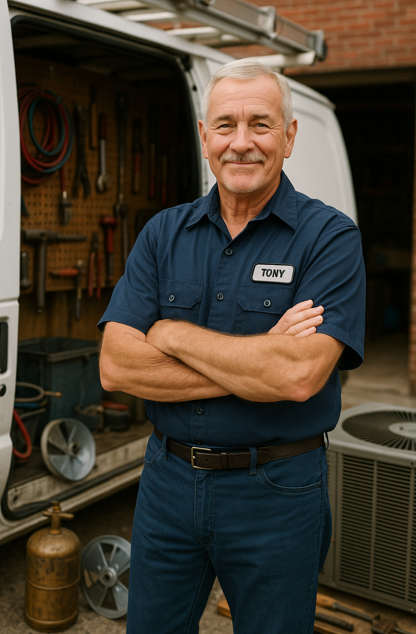Introduction
Hey there, Tony Marino here. If you’re shopping for a new HVAC system sized around 3 tons — a popular choice for many average-sized homes — sizing and selection aren’t as simple as “grab the biggest unit you can.” Too small or too big, and you’re paying more, stressing your system, or losing comfort.
I’m here to cut through the noise and give you practical, real-world advice on how to pick the right 3 ton AC and gas furnace system that fits your home and keeps your family comfortable year-round — without breaking the bank.
🏠 Step 1: Understand What "3 Ton" Means in HVAC Terms
A “ton” in AC terms refers to the system’s cooling capacity — specifically, how much heat it can remove in one hour. One ton equals 12,000 BTUs (British Thermal Units). So, a 3 ton AC system removes about 36,000 BTUs per hour — typically right for homes around 1,500 to 2,000 square feet.
For the most accurate sizing, HVAC pros rely on the ACCA Manual J load calculation, which considers your home’s unique features like insulation, windows, and layout.
Why Not Just Pick a Bigger Unit?
Oversized units cool too quickly without properly dehumidifying, leading to discomfort and increased wear. For more on sizing impacts, the Energy Saver HVAC guide is a great resource.
❄️ Step 2: Consider Your Home Size and Layout
Beyond square footage, factors like insulation quality, window orientation, ceiling height, and local climate affect the system size you need. Hotter climates, poor insulation, or large windows can increase cooling loads, so keep these in mind when planning your purchase.
🔥 Step 3: Don’t Forget the Gas Furnace Size
Matching your furnace size to your AC unit ensures balanced heating and cooling. Typically, a 3 ton AC pairs with a 60,000 to 100,000 BTU gas furnace, depending on your home's heating load. The Department of Energy offers helpful insights on heating system sizing and efficiency.
⚙️ Step 4: Check Efficiency Ratings — SEER2 for AC, AFUE for Furnace
Energy efficiency ratings matter. Look for a minimum of 14.5 SEER2 for your AC to keep energy use in check, and a furnace with 95% AFUE or higher for efficient heating.
Understanding these ratings helps you balance upfront costs with long-term savings. Visit ENERGY STAR’s HVAC efficiency page to learn more about efficiency standards.
💰 Step 5: Factor in Installation and Additional Costs
Installation costs vary by region and home complexity. Ductwork upgrades, permits, and removal of old equipment can add up. Always get multiple quotes from licensed contractors to compare prices and services.
🔧 Step 6: Look for Systems Using R-32 Refrigerant
R-32 refrigerant is a newer, more efficient, and environmentally friendly option compared to older types like R-410A. Choosing R-32 helps future-proof your system and may qualify you for rebates. The U.S. Department of Energy provides a detailed look at R-32’s benefits.
📅 Step 7: Explore Warranty and Maintenance Plans
A strong warranty can protect your investment, with many systems offering 10 years on key components. Regular maintenance plans often extend warranty coverage and keep your system running efficiently.
🔎 Step 8: Use Trusted Brands and Certified Installers
Stick to well-known brands and hire NATE-certified installers. Proper installation is key for performance and longevity. You can find certified contractors and reviews through resources like the Better Business Bureau.
Wrap-Up: Make Your Choice with Confidence
Selecting the right 3 ton AC and gas furnace system doesn’t have to be overwhelming. Focus on correct sizing, efficiency ratings, quality installation, and choosing systems with R-32 refrigerant to enjoy comfort and savings for years to come.
Want to explore top 3 ton R-32 AC and gas furnace systems? Visit our collection here: 3 Ton R-32 AC and Gas Furnace Systems.
Tony’s Pro Tips
-
Always ask for a Manual J load calculation to confirm sizing.
-
Check for utility rebates to save on high-efficiency equipment.
-
Don’t skimp on quality — the right system pays for itself.







